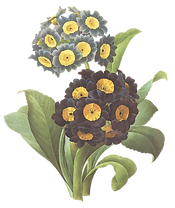Think Spring (in September?)
- Cynthia Thomas
- Sep 20, 2016
- 3 min read
While the season screams pumpkins, mums and all things 'harvest,' it's actually the perfect time to plant Spring bulbs. Here are some tips that I hope will encourage you to get started and sow some surprises for yourself.
Choosing Bulbs:
Buy what you like. It’s good to check the bloom time – there are spring, summer and fall bulbs. In general, the spring progression starts in March and goes: crocus, hyacinth, daffodils & narcissus, tulips, allium. Obviously there are many more bulbs, so just read the package.
Make groupings. To give a naturalized look, plant in “3s” or odd number. I highly suggest that you don’t plan them “in a row” – it looks unnatural and they won’t have any support. If you want that look, just group in three and make a little more space between.
Check height. Blooms more than 12” will need to have other plants around so they don’t get blown over with the spring rains and winds.
Site selection (if you want repeat performers):
Choose an area where you won’t mind looking at the dying foliage. Once the flowers bloom in the spring, they need to be allowed to die back, so that the energy goes back into the bulb. I have my bulbs planted right in with some ground covers (phlox, periwinkle, vinca or ivy) and can kind of tuck them under and out of the way when the leaves start turning yellow.
Bulbs in planters will likely freeze over winter.
Preparing the hole – (check package for depth to dig):
The bigger the bulb, the deeper the hole. Try not to skimp here, squirrels like to dig up loose bulbs.
Plant with the tip (skinny side) up.
Add organic matter if your soil is very poor. I like to just mix it in with the dirt that I dug up. Tamp the soil back down with your foot. Press down hard.
Add a few every year:
Bulbs prices vary, but typically cost $1 per. If you go to a nursery that has them in bins, rather than pre-packaged with a label, it will save you some money (but make sure you take a picture or write down the specifics for planting).
Make yourself a budget – say $25, and just add that many every year. Before long, your lawn will look spectacular. This also helps if you have a poor planting experience – you won’t loose everything in one shot.
Take pictures in the Spring so you can remember where everything is next year
Careful of Pets:
Some bulbs are poisonous if eaten. According to homeguides.sfgate.com: “If you dig up bulbs for storage after they flower, make sure you keep them out of reach of dogs, who might try to eat them. Dogs who dig should be kept out of bulb beds just in case. Keep any potted bulbs growing indoors out of reach of your pets. If you suspect your animal may have eaten one of these bulbs and has been poisoned, do not wait for symptoms to appear. Symptoms may take a while to manifest and by the time they do, your pet may be beyond help. Take your dog to your vet or to an emergency vet immediately.”
Happy Planting - take advantage of rainy days to help
loosen the soil when you get ready to dig. Get wet. Get dirty. Get Planting!























Comments